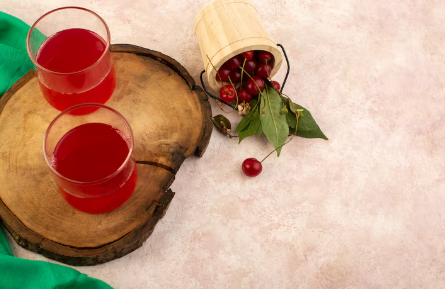The Ultimate Guide to Ginja: Portugal’s Beloved Cherry Liqueur

Nestled in the heart of Portuguese culture, in the bustling alleyways of Lisbon and the medieval walls of Óbidos, exists a tiny, potent symbol of national pride and simple pleasure. This is the world of Ginja, also affectionately known as Ginjinha, a sweet and slightly sour cherry liqueur that is far more than just a drink; it is a ritual, a historical artifact, and a direct line to the soul of Portugal. To taste Ginja is to taste centuries of tradition, a concoction that has been lovingly perfected in monasteries, passed down through families, and served in minute glasses to everyone from kings to commoners. Its vibrant ruby red color hints at the burst of flavor contained within—a harmonious blend of tart Morello cherries, sugary syrup, and a gentle, warming kiss of alcohol, often brandy. This article will serve as your comprehensive guide, unraveling the rich history behind this iconic liqueur, exploring the intricate process of its creation, and offering practical advice on how and where to experience it like a true local, transforming you from a curious tourist into a knowledgeable connoisseur of one of Portugal’s most cherished treasures.
A Sip Through Time: The Historical Roots of Ginjinha
The story of Ginja begins not in a corporate distillery, but within the hallowed, quiet walls of a 17th-century monastery. As with many European liqueurs, its origins are steeped in the monastic tradition of creating medicinal tinctures and elixirs. The most popular legend points to a friar in the Church of Santo Antão in Lisbon, who, sometime in the 1600s, experimented with steeping Morello cherries (known as ginja berries) in aguardente (a strong grape brandy) with sugar and cinnamon. The result was so delightful that the recipe quickly escaped the monastery walls and captured the palate of the entire city. By the 19th century, Ginja had firmly entrenched itself in the daily life of Lisbon. The first dedicated ginjinha bars, often just tiny holes-in-the-wall with a single barrel and a counter, began to appear, serving as social hubs where people from all walks of life would gather for a quick, fortifying shot. This tradition continues unabated today, making Ginja one of the oldest continuously consumed liqueurs in Europe with a direct and tangible link to its past, a rarity in our rapidly modernizing world where authentic traditions often fade away.
From Berry to Bottle: The Art of Crafting Authentic Ginja
The magic of Ginja lies in its beautiful simplicity and the quality of its few core ingredients. The process is one of patience and precision, a slow alchemy that cannot be rushed. It begins with the star of the show: the Morello cherry, a specific sour cherry variety that provides the essential tart backbone that balances the liqueur’s sweetness. These cherries are macerated, or steeped, in a high-proof alcohol, typically aguardente, which acts as a solvent to extract the cherries’ deep flavors, essential oils, and that characteristic ruby-red color. Sugar is then added, not just as a sweetener, but as a crucial component that balances the acidity of the fruit and contributes to the liqueur’s velvety mouthfeel. The mixture is then left to mature in stainless steel vats or, traditionally, in large glass demijohns for a period that can range from several months to a few years. During this maturation, the harsh edges of the alcohol soften, the cherry flavor deepens and becomes more complex, and the sugar fully integrates, resulting in a smooth, harmonious liquid. Some producers add a secret blend of spices, with cinnamon and cocoa being the most common, to create their own signature profile, but the finest Ginjas often let the pure, unadulterated flavor of the cherry shine through.
The Ginja Experience: How to Drink It Like a Local
Experiencing Ginja is about more than just consumption; it is about participating in a timeless Portuguese custom. To do it correctly, you must seek out an authentic ginjinha bar, known for its modest, often standing-room-only atmosphere. When you order, you will be presented with a simple choice: “com elas ou sem elas?”—with or without the cherries. Choosing “com elas” means your small glass will contain one or two of the alcohol-soaked cherries from the bottom of the barrel, a chewy, potent treat at the end of your drink. The liqueur itself is always served in a small shot glass, reflecting its potency and the intention to sip and savor, not to gulp. While it can be enjoyed chilled, many purists prefer it at room temperature to appreciate the full spectrum of its aroma and flavor. The ritual involves taking the glass, often while standing at the counter of a crowded little bar, exchanging a few words with the server or fellow patrons, and slowly sipping the rich, sweet-tart liquid. This moment of pause, this tiny celebration in the middle of a busy day, is the true essence of the Ginja experience. It is a moment of pure, unadulterated Portuguese alma (soul).
Beyond Lisbon: Ginja de Óbidos and Regional Variations
While Lisbon is the undeniable spiritual home of Ginja, a short journey north to the enchanting medieval town of Óbidos reveals another iconic chapter in this liqueur’s story. Here, Ginja is not just a drink; it is a protected geographical indication, proudly labeled Ginja de Óbidos. What sets it apart is often the specific variety of cherry grown in the region and the traditional method of serving it. In Óbidos, it is a common and delightful sight to see Ginja served in a small edible chocolate cup. You take the shot, drink the liqueur, and then eat the chocolate cup, creating a perfect harmony of cherry and chocolate flavors that has become a major tourist attraction in its own right. Beyond Óbidos, slight regional variations exist throughout Portugal. Some producers in the Alcobaça region, for instance, are known for a slightly spicier profile, while others may experiment with infusions of vanilla or other fruits. This regional diversity showcases the adaptability of the core recipe and how different communities have made Ginja their own, while still respecting the fundamental principles that define this cherished national liqueur.
Conclusion
Ginja is a testament to the idea that the most profound cultural experiences can come in the smallest of packages. It is a flavor that captures the very essence of Portugal—sweet, robust, historical, and unpretentiously delightful. From its mystical origins in a Lisbon monastery to the bustling, tile-adorned bars of the Baixa district and the chocolate cups of Óbidos, Ginja offers a journey that is as rich in history as it is in taste. It is more than a mere souvenir or a check on a culinary list; it is an invitation to pause, to connect with a centuries-old tradition, and to share a moment of simple joy. So, on your next visit to Portugal, step away from the main squares, find a humble ginjinha bar, order your glass “com elas,” and take a slow, deliberate sip. In that moment, you won’t just be tasting a liqueur; you will be tasting the heart of a nation.
Frequently Asked Questions (FAQ)
Q1: What is the difference between Ginja and Ginjinha?
There is no practical difference. “Ginjinha” is often considered the diminutive, more affectionate term for “Ginja,” much like saying “a little Ginja.” In everyday usage in Portugal, the terms are used interchangeably.
Q2: Can I buy Ginja outside of Portugal?
Yes, it is increasingly available in specialty liquor stores and online retailers that focus on international products. Look for brands like Ginja de Óbidos or Ginja Serra da Estrela for authentic options.
Q3: How should I store a bottle of Ginja?
Unlike wine, Ginja does not improve with age once bottled. You should store it in a cool, dark place, away from direct sunlight. There is no need to refrigerate it until after opening. Once opened, refrigerating it can help preserve its flavor for several months.
Q4: Is Ginja very alcoholic?
The alcohol content typically ranges from 18% to 24% ABV (alcohol by volume). This is stronger than wine but less potent than most spirits like whiskey or vodka. Its sweetness can make it deceptively easy to drink, so it’s best enjoyed in moderation.
Q5: Can you eat the cherries in the bottle?
Absolutely! The cherries at the bottom of the bottle or barrel are a delicious treat. They are soft, saturated with the liqueur, and pack a flavorful (and potent) punch. They are often used as a topping for desserts like ice cream or cakes.
Q6: Are there any popular cocktails made with Ginja?
While traditionally consumed neat, modern bartenders have started to use Ginja in cocktails. A simple and popular mix is a “Ginja Tonic,” similar to a Gin and Tonic, where Ginja is paired with tonic water and a slice of orange or a cinnamon stick.


